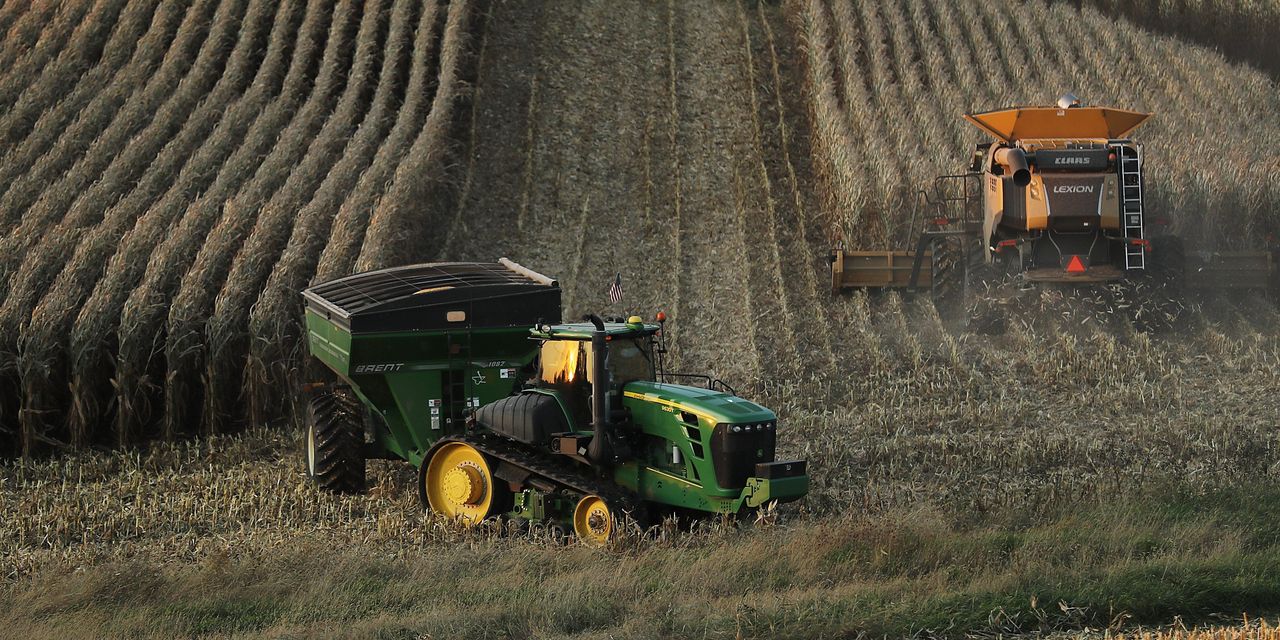In an effort to address climate change, the U.S. Department of Agriculture is making a historic investment into new revenue streams and research for farmers and other agriculture producers who embrace practices to improve soils and mitigate carbon emissions.
USDA’s $2.8 billion pilot program, Partnerships for Climate Smart Commodities, selected 70 projects as part of the first pool of funding in September. A second round of funding will be announced later this year. USDA Secretary Tom Vilsack initially announced the program would be just $1 billion, but nearly tripled the amount based on the strength of the proposals received.
Pilot projects include trying to reduce methane emissions, measure soil quality and sequester sequestration, and to create market opportunities for beef and bison ranchers who use sustainability agricultural grazing and land management practices. There is also a financing initiative that looks to create financial incentives for “climate-smart” farmers who try to mitigate carbon in their practices, along with creating a market for commodities produced in a climate-smart way.
The projects can last up to five years, and funding ranged from $5 million to $100 million.
Some 11% of U.S. greenhouse gas emissions in 2020 came from the agriculture sector, according to the U.S. Environmental Protection Agency. With some greater investment and changes to production, agriculture could become a carbon sink, offsetting other carbon emissions, say scientists.
Most of the best-known agriculture companies are using precision technology to help farmers use fewer resources, such as crop equipment companies like John Deere
DE,
and AGCO
AGCO,
or irrigation firms such as Lindsay
LNN,
and Valmont Industries
VMI,
But the pilot programs funded by USDA look for ways to allow farmers to change practices to one day allow agriculture to become a carbon sink, which removes carbon dioxide from the atmosphere, than a carbon emitter.
Erin Fitzgerald, CEO at U.S. Farmers & Ranchers in Action, a coalition of farmers and others in the agriculture supply chain, says USDA’s funding is a “huge” step to stimulate innovation in agriculture and build new markets. USFRA recently released a report about how ESG investors can think about public or private investments in agriculture to mitigate climate change.
“The fact that the government has stepped up to create what I would call challenge grants to innovate and try to figure out how we build new markets that can get back to our farmers is a huge step,” she says.
MarketWatch discussed this program and climate change with her. This interview has been edited for length and clarity.
MarketWatch: Why is this funding so important?
Fitzgerald: Government support is what’s been missing [to encourage climate-focused programs in agriculture]. Quite often we hear “the government should do this, the government should do that.” Well, now it’s happened. The fact that the government put this front and center now means it’s time for the private sector to really step up. We need the rest of the value chain to come in and help build those new business models.
Read: High fertilizer prices are creating pain for consumers and gains for investors
MarketWatch: In this first funding round, USDA announced 70 climate-smart projects. What are some of the key climate issues that ag needs to address and how might this help?
Fitzgerald: Plants and animals are the only living machines that can sequester carbon, literally out of the atmosphere. It’s really worth thinking about nature-based solutions as a key to fight climate change. We can do this on working lands. It’s really thinking about the whole system and carbon cycle, and how can I keep improving the soil base?
Manure actually can act as a soil amendment. There are little microbes in that manure and there are microbes in that soil that help the plants. If you were to see the North American corn belt from space, you’ll see it looks fluorescent pink. That’s because there’s photosynthesis happening and photosynthesis is carbon cycling,
In agriculture, we constantly deploy old technology and new technology on our farms, but what’s new is how to measure carbon cycles. This will unleash innovation. Now we need the mechanism to pay for it.
MarketWatch: In addition to the projects being done on farms, there’s a financing initiative to encourage farmers to use climate-smart practices and establish markets for commodities grown this way, plus other financing innovations. Why is that important?
Fitzgerald: Globally, of all the ESG (environmental, social and governance) investing, only 2% is going to nature-based solutions. Many of the financial institutions who take a portfolio approach to climate change are … (mostly) invested in renewable energy. We need to increase the amount of investment in agriculture. Agriculture is really the only way we can start recycling and (sequestering) carbon. Ag needs to be seen as an ESG investment. There’s the environmental and social aspect; 10% of the American workforce is in food and ag. We know that the American public cares about food and agriculture. So how can we start making new forms of investment that really start supporting the future?
Farmers are often paid by the season, but the investments they make are five, 10 years out. Eight of the last 10 harvest seasons, farmers have faced extreme and episodic weather events. This sector is most at risk to climate change, but one solution is changing the financial perspective, and including farmers as part of the supply chain financing.
With COVID, with Russia and Ukraine, for the first time we’ve started to see agriculture talked about on a global state. It’s at the U.N. (United Nations General Assembly meeting), this spring the World Economic Forum had ag front and center. We talk about trying to address climate change; we have to address supporting people, and the only way you support people is through agriculture. It’s fundamental to how all economies work.
More on MarketWatch
This new ETF buys the commodities that will power our carbon-free future
